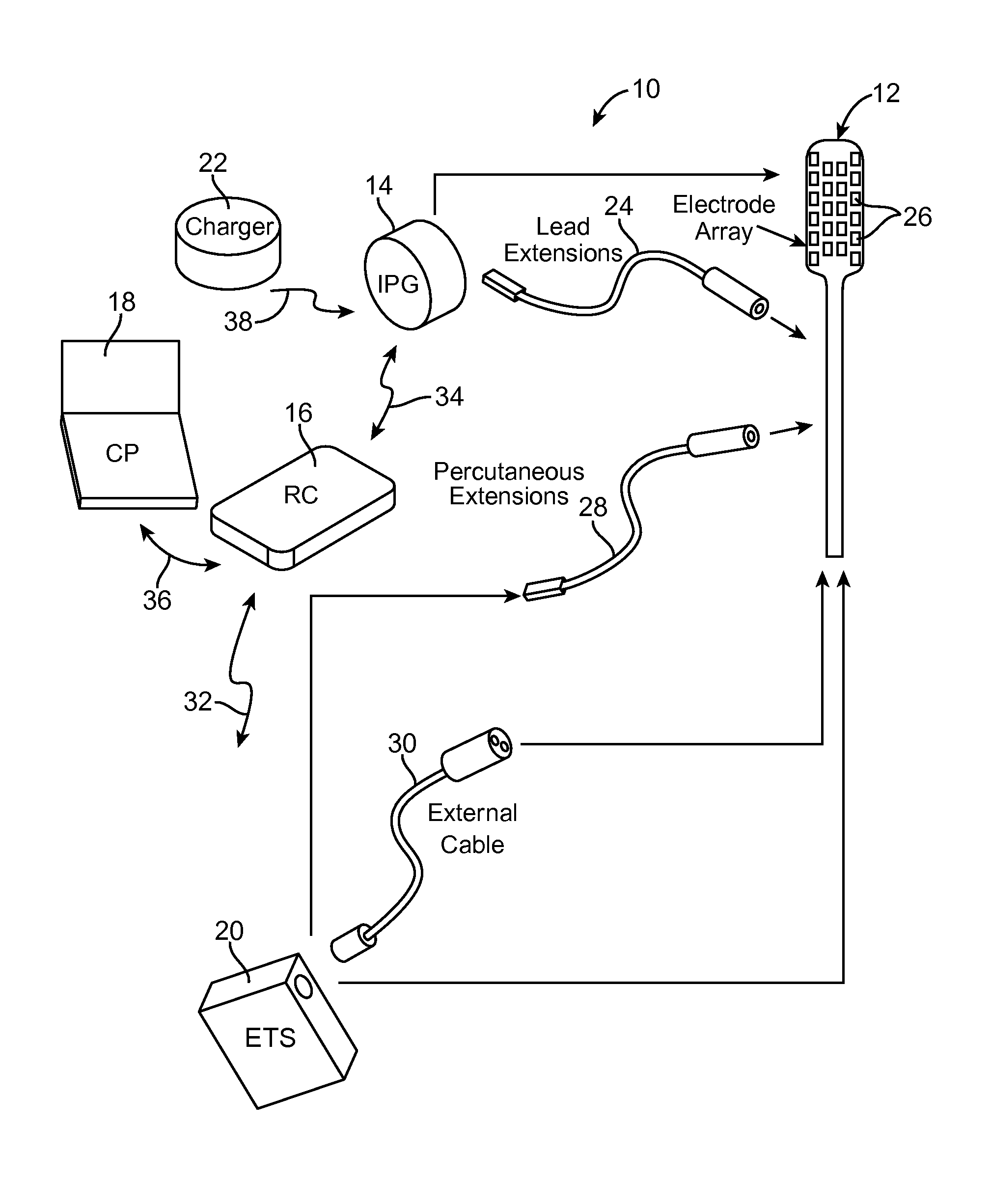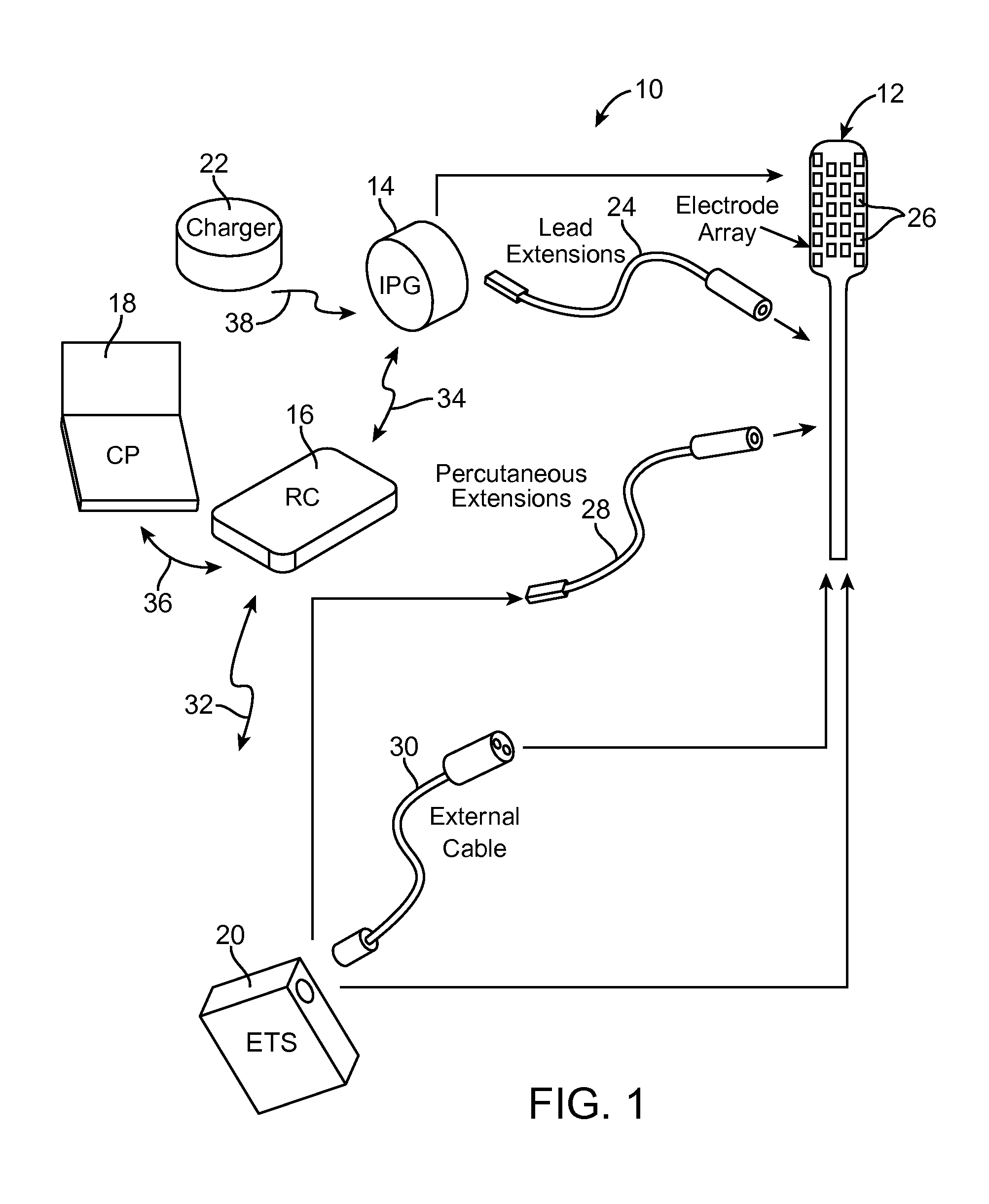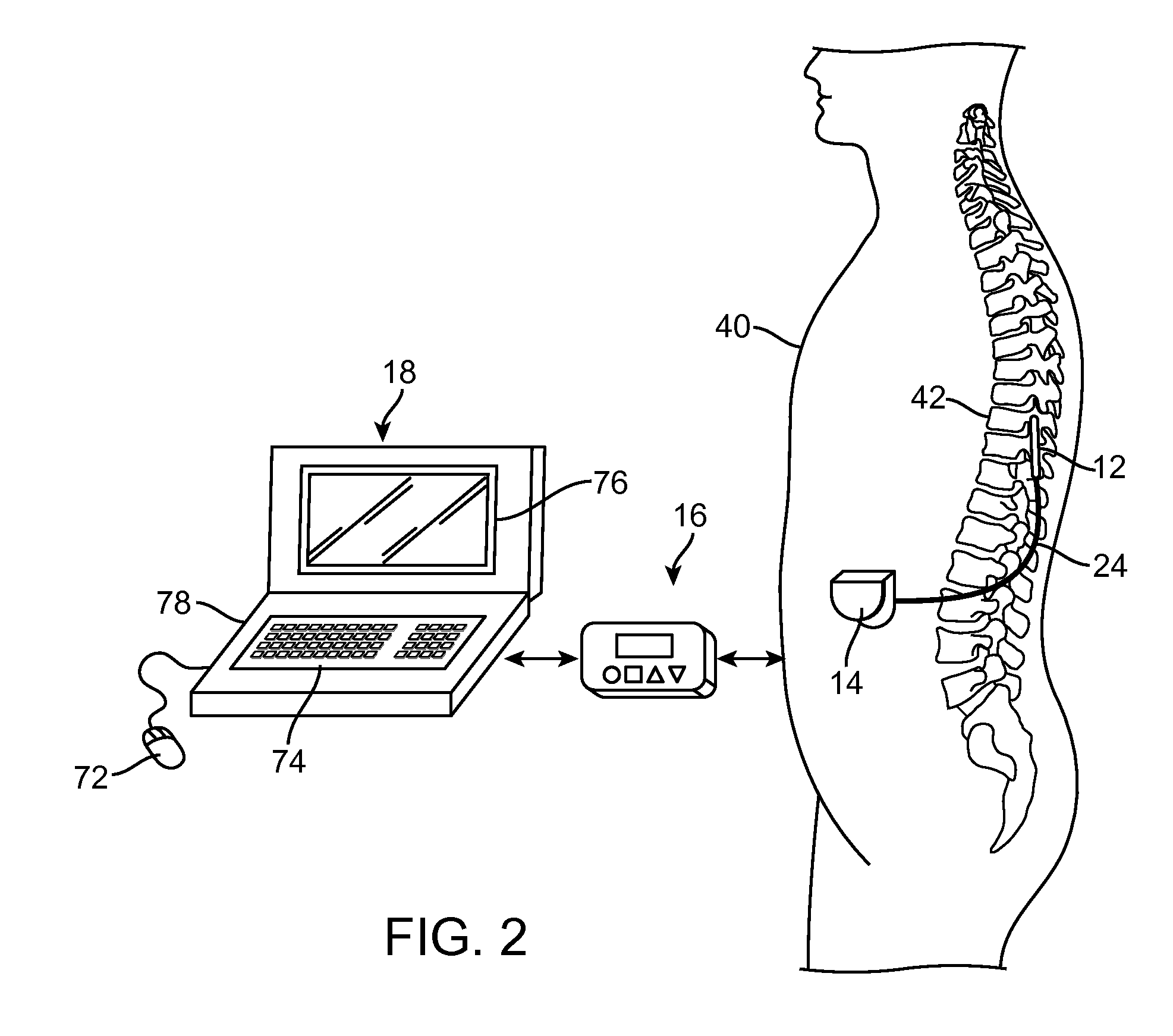However, the number of electrodes available, combined with the ability to generate a variety of complex stimulation pulses, presents a huge selection of stimulation parameter sets to the clinician or patient.
While the use of navigation tables have proven to be useful in steering
electrical current between electrodes in an efficient manner, that are certain inherent disadvantages associated with navigation tables.
However, due to memory and time constraints, only a limited number of fractionalized
electrode configurations are stored within the navigation table.
Furthermore, a substantial amount of time and effort must be spent in developing navigation tables for each new lead design, thereby presenting a
bottleneck for lead development.
Because the implementation of new navigation tables must take into account all leads that are to be used with the IPG, as well as the different lead positions, this challenge slows the ability to include new navigation features in the system.
Furthermore, if the
remote control needs to be reprogrammed; for example, if the patient returns to a physician's office to be refitted to improve the stimulation therapy provided by the neurostimulator, the clinician may have to start the fitting from scratch.
In particular, while the
remote control is capable of uploading the stimulation parameter sets to the Bionic Navigator® to aid in
reprogramming the
remote control, they may be different from any stimulation parameter sets that are capable of being generated using the navigation table due to the limited number of fractionalized
electrode configurations within the navigation table; that is, the fractionalized
electrode configurations currently stored in the remote control may not match any fractionalized electrode configurations stored in the navigation table because they were originally generated when the Bionic Navigator® was operated in the manual mode.
In any event, if the stimulation parameter sets uploaded from the remote control to the Bionic Navigator® do not identically match any stimulation parameter set corresponding to a fractionalized electrode configuration stored in the navigation table, it cannot be used as a starting point in
reprogramming the remote control / IPG.
Because
programming the remote control can be quite complex, even when the Bionic Navigator® is operated in the navigation mode, the time lost as a result of having to reprogram the remote control / IPG from scratch, can be quite significant.
For example, ideal target poles aligned along the longitudinal axis of the
spinal cord of a patient may be optimum when steering current in a rostro-caudal (longitudinal) direction, but may not be optimum when steering current in a medial-lateral (transverse) direction.
Likewise, ideal target poles aligned perpendicular to the longitudinal axis of the
spinal cord of a patient may be optimum when steering current in a medial-lateral (transverse) direction, but may not be optimum when steering current in a rostro-caudal direction (longitudinal).
Furthermore, because there a limited number of electrodes when steering current in a particular direction using arbitrarily defined target poles, there remains a need to modify the current steering on-the-fly to prevent any target poles from being moved outside the maximum extent of the
electrode array.
However, because different types of
neurostimulation leads have different electrode separations, a current steering
algorithm that is designed for a particular electrode separation cannot be used for other electrode separations.
Furthermore, when multiple
neurostimulation leads are used, the spacings between the electrodes will typically not be uniform, thereby providing a challenge when attempting to match the ideal
cathode /
anode spacings with the spacings of the physical electrodes.
 Login to View More
Login to View More  Login to View More
Login to View More 









